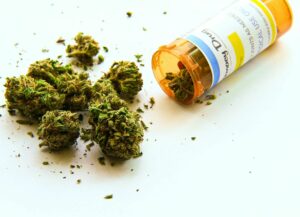Two of the most conservative states in the United States, Texas and Georgia, recently passed medical marijuana legislation allowing very limited use of medical marijuana for a set number of conditions. Texas has legalized the use medical marijuana in one case and form, cannabis oil that is high in CBD and low in THC for patients with intractable epilepsy. In order for patients to qualify they must have tried at least two traditional epilepsy treatments and found them ineffective. Then their doctors may approve the use of medical marijuana. The doctors, however, cannot prescribe medical marijuana. They simply may suggest the use of it under their right of the first amendment for free speech.
In Georgia, a short list of conditions was recently deemed as legal uses for medical marijuana. This legislation was prompted after over 20 families from Georgia moved to Colorado temporarily to provide their children with medical marijuana products to aid in the decrease of seizures associated with epilepsies. In addition to epilepsies, the law in Georgia allows access for patients with end-stage ALS, multiple sclerosis, Parkinson’s disease and cancer.
In both these states, obtaining medical marijuana is still a difficult process. Both of these conservative states have sent the message that marijuana is medicine, but they limit the conditions which it should be used for. Both of these states are recognizing the benefit of medical marijuana, even thought the roll out is slow and there is still some widespread resistance. The wave of changing ideas in the United States cannot be denied, but there is still widespread worry about the implications of medical marijuana coming into communities all over the country in larger amounts. Of course, there are added concerns because marijuana is still a federally illegal substance.
Across the United States 78% of the population is in favor of medical marijuana. Despite the continuing lack of medical studies conducted within the United States, testimonies across the United States have provided the US population with encouragement to be in favor of medical marijuana. Only 43% of the US population, however, is in favor of recreational marijuana. An impressive 90% of the US population believes that people should be educated by a knowledgable doctor before purchasing medical marijuana. In states, however, where medical marijuana is new, access to educated primary doctors can be difficult. Many of the opposition that still exists to medical marijuana regards the unknowns of medical marijuana and how it can effect the youth population.
A momentous study was released recently showing no increase in teen marijuana smoking in the 21 states which have passed medical marijuana laws. The study was conducted between 1991 and 2014. A survey of 1 million students in the 8th, 10th, and 12th grade were asked about their medical marijuana usage each year. Overall cannabis usage of 8th graders decreased since the pass of the laws. The reason for this is thought to be that young students view marijuana as medical rather than recreational. Marijuana use of high school students has remained stagnant between 2011 and 2013 when many of the medical marijuana bills were implemented.
Views and opinions of medical marijuana have changed drastically in the past few years, from states passing medical marijuana bills from being the outcasts to the norms. The most important factor in this change among the american public is the recognition of marijuana as a medicine for a myriad of conditions. Medical marijuana, though not nationally legal, has become recognized for its medicinal qualities, especially in pain and seizure relief. Medical marijuana has been legitimized and with that there have been positive affects. Patients are able to access the cannabis they need to aid with medical conditions and has changed the way younger patients view marijuana, no longer as a recreational drug but a medical drug. Though more states are allowing access to medical marijuana, access is still limited in some places. Places like Texas, Georgia, and Illinois still must find proper ways to roll out their program, as well as expand their programs to assist as many patients as possible. Even though it is legal in some states, patients struggle to obtain the products they need. Each step in the progress of medical marijuana legitimization is positive, but much more can be done in bringing people the medical assistance they need.






